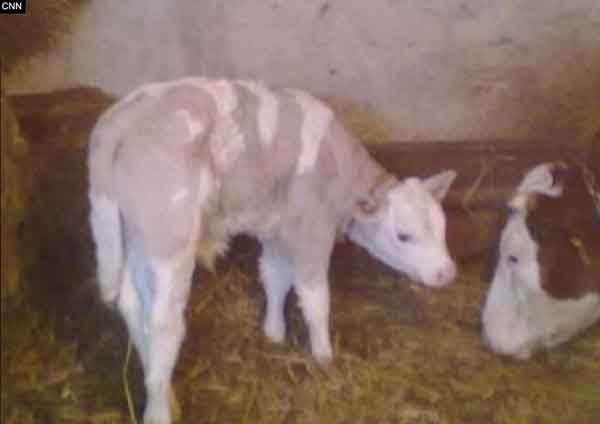
Purple calf born in Serbia brings Milka's iconic cow to life
Metro.com - January 17, 2012

Purple calf born in Serbia brings Milka's iconic cow to life
Metro.com - January 17, 2012
Born in a village near to the city of Cacak, locals insist they have not seen a calf like this one before. The calf has quickly become the talk of the town and is incredibly popular with young children, who have been visiting the barn in their droves to catch a glimpse of the unusual offspring. The calf is said to be perfectly happy and healthy and vets have suggested the purple coloring is 'probably a matter of genetics', Serbian news channel PTC reported. 'We were surprised when we saw this calf's colors. So far, no cows in the world have adopted these colors,' said its owner.
But the Milka calf is not the only cow to attract the world's press of late. Last month six-year-old cow Beba gave birth to four 'miracle' calves in the central Serbian village of Sljivica, IGN reported. Cows usually give birth to just one calf at a time so this case was considered extremely rare. 'After we pulled out the first calf a neighbor told me he thought there were more,' owner Dragan Pavlovic explained. 'Soon the second calf came out, then third, then fourth, all males.'
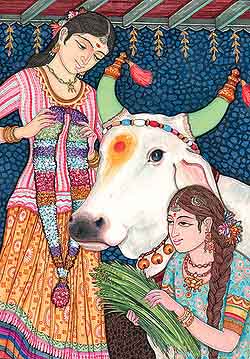
Cattle are considered sacred in various world religions, most notably Hinduism, Jainism, Buddhism, Zoroastrianism as well as the religions of Ancient Egypt, Ancient Greece, and Ancient Rome. In some regions, the slaughter of cattle may be prohibited and their meat may be taboo, especially India, except in the state of Kerala.
In many cultures the cow is symbolic of Mother Earth, and has been a symbol of fertility, nurturing, and power.
The cow is also a lunar symbol, aligning itself with feminine (yin) qualities (see list of yin attributes) among the Chinese yin-yang energies.
The Egyptian goddess Nut is sometimes depicted with the cow having four stars on its belly. This represents the four cosmic quadrants of the earth, and the respective flavor each directional energy freely flows through each of these corners.
Also in Egyptian mythology, Hathor was an ancient goddess worshipped as a cow-deity. Hathor was the Great Mother goddess of joy, and was considered the nourisher of all things. She was originally a personification of the Milky Way, which was seen as the milk that flowed from the udders of a heavenly cow. She was also considered a protective goddess and an emblem of royalty.
In Norse mythology the cow makes an appearance as Audhumla whose utters emitted the four rivers of power - these provided nourishment for the giants (primarily the first giant, Ymir) that ruled the First World.
In Vedic literature the cow is also a symbol of abundance and fertility as it represents both earth and sky.
To Hindus and Buddhists, symbolism of the cow deals with patience and holiness. The cow is considered India's most sacred animal. The calm, tender nature of the cow wins this right among the Buddhists.
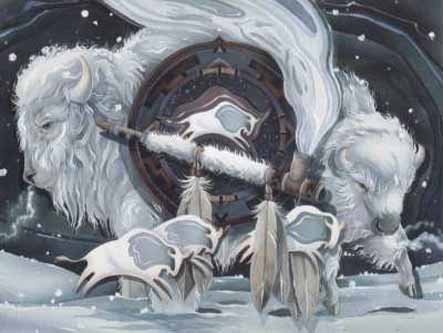
Animals and Prophecy
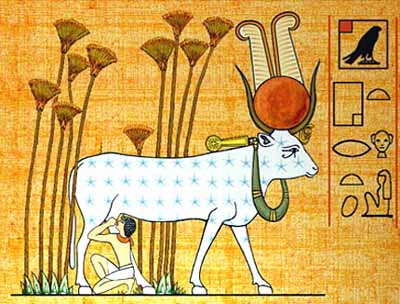
Hathor the Egyptian Cow Goddess
Rebirth
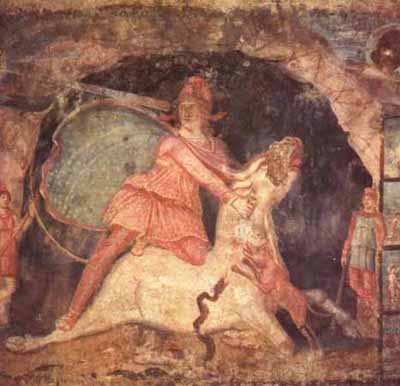
Mithraism
Part of Zoroastrianism
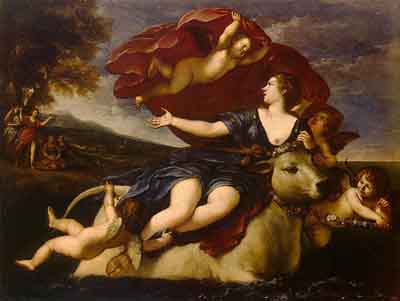
Europa (Greek Mythology)
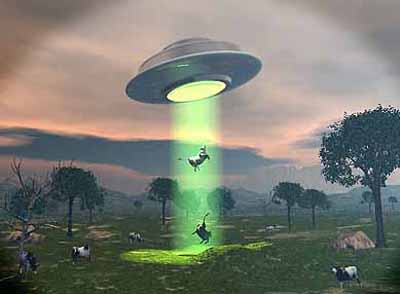
Cattle Mutilations

The Color Purple